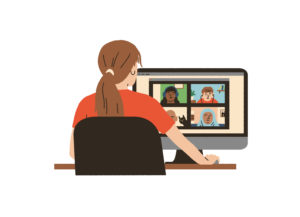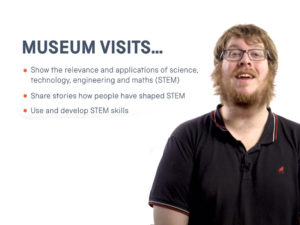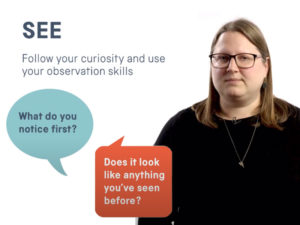Across the Science Museum Group, we always put the audience at the heart of everything we do. This includes our Academy training courses.
our Academy training courses.
We work to ensure that the courses we offer, the frequency and the type of delivery works for as many people as possible. For example, over the pandemic we adapted our training offer so that it could be delivered online since meeting in person wasn’t possible.
We have now brought back our in-person Academy courses to run alongside our online offer as that format still works for people who are too far away or don’t have the time to attend a full day course. However, we recognise that even an hour online course can be difficult for people, especially for teachers who are still working to catch their students up and have many demands on their time.
We have lots of different resources that we share on courses which could be helpful, including top-tips, practical tools and guides. We wanted to be able to share those in a way that was clear, provided the framing and context, and would allow for people to peruse them on their own time.
We wanted something more engaging than just a link with text to the relevant resources, which led us to explore the idea of making short training videos. Here we share our thinking and process of creating our new ‘Making the most of your museum visit’ online videos.
where WE startED
The first course that we looked at transforming into these videos was our ‘STEM Beyond the Classroom’, which is packed with practical ideas to help educators maximise the learning opportunities of a museum visit.
practical ideas to help educators maximise the learning opportunities of a museum visit.
Planning a learning experience outside the classroom can be overwhelming for educators/group leaders and the videos will provide useful information on how to make the most of a SMG museum visit and signpost to all useful supporting resources which can be used to help enhance and guide a visit.
We made sure that each video was about five minutes long, to help keep peoples attention and to allow people to watch them even when they limited time available. We ensured that watching the series of videos would take less than 20 minutes, which meant creating four videos.
what WE includeD
At first, we distilled the content of the course into the key parts and tried framing the scripts a bit like how we present the course. However, this meant that people had to watch the videos sequentially and wouldn’t necessarily get the information they were seeking unless they watched all the videos.
course. However, this meant that people had to watch the videos sequentially and wouldn’t necessarily get the information they were seeking unless they watched all the videos.
As a result, we started again, with each video focusing on one self-contained topic which could be watched as a one-off or in any order. The four videos we focused on were:
- Value and benefit of visiting museums
- How to make the most of your museum visit
- How to explore and talk about objects in the museum
- Resources that will support your visit
HOW WE WANTED THE VIDEOS TO LOOK
Another consideration was the quality of the videos. We thought about running it like a webinar, recording on a video conferencing platform. While this format works great for certain circumstances, it wasn’t quite what we were looking for in these five-minute snippets. We didn’t want a presentation, where it felt like it was just reading slides. Rather, we wanted something more fit for purpose.
We first tried out doing our own recordings, and even with decent video, audio and lighting equipment, we quickly realised we needed experts to take the videos to the next level.
needed experts to take the videos to the next level.
We hired a video manager, and they sorted out all the equipment, set-up and directed the video shoot. Speaking of which, we highly recommend using a teleprompter, particularly if you are using colleagues rather than actors!
While three to six minutes of script doesn’t sound like a lot, the teleprompter alleviates any stress of trying to memorise something word for word.
Once the videos were filmed, and it was looking and sounding great, we wanted to add graphics to keep people’s attention. Again, this is where our wonderful video manager came in to help us to shape the look and feel of the videos.
HOW the videos needed to be hosted online
Once the videos were done, the webpages needed to be built. We wanted the videos to act as a guide to some of our supporting resources, so it was key to ensure we had clear links to relevant information.
We also wanted a bit of interaction, something small people could do after watching to put it into practice, so we included a short interactive element. For example, after the ‘How to make the most of a museum visit’ there is a question asking what they would try next time before they visit.
what’s next?
This was a pilot project, but we have learned a huge amount already in creating these first set of videos. We now need people to watch them and get some evaluation done to find out if they are an effective resource, and to see what we could do differently in the future.
If you know anyone who is planning a group visit to a Science Museum Group Museum, please encourage them to check out the Making the most of a museum visit page.
what to read next
If you’ve enjoyed this blog, then here are some related blogs we suggest you read next.